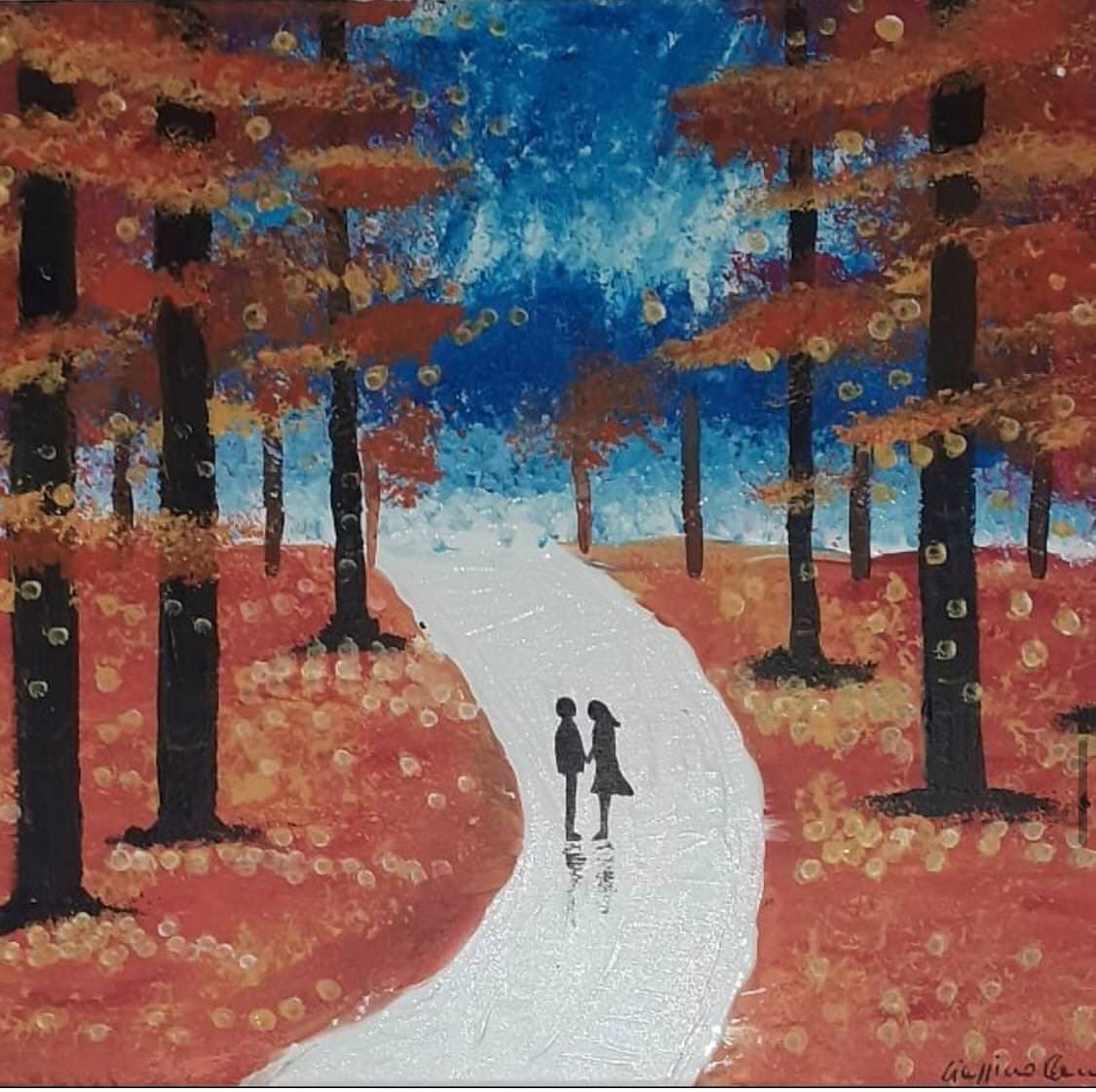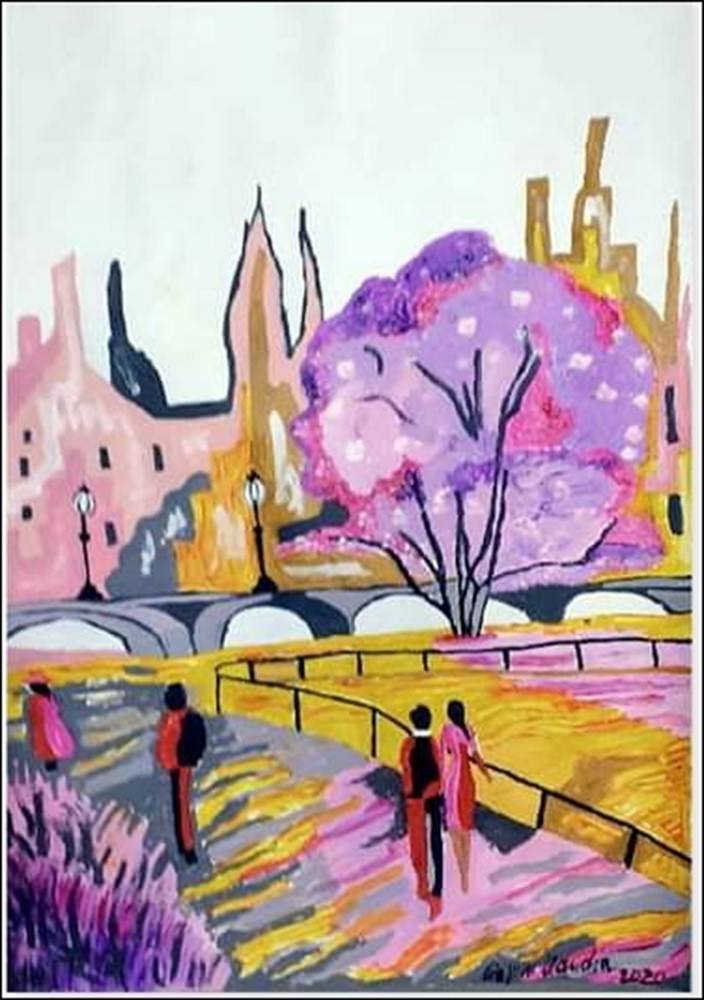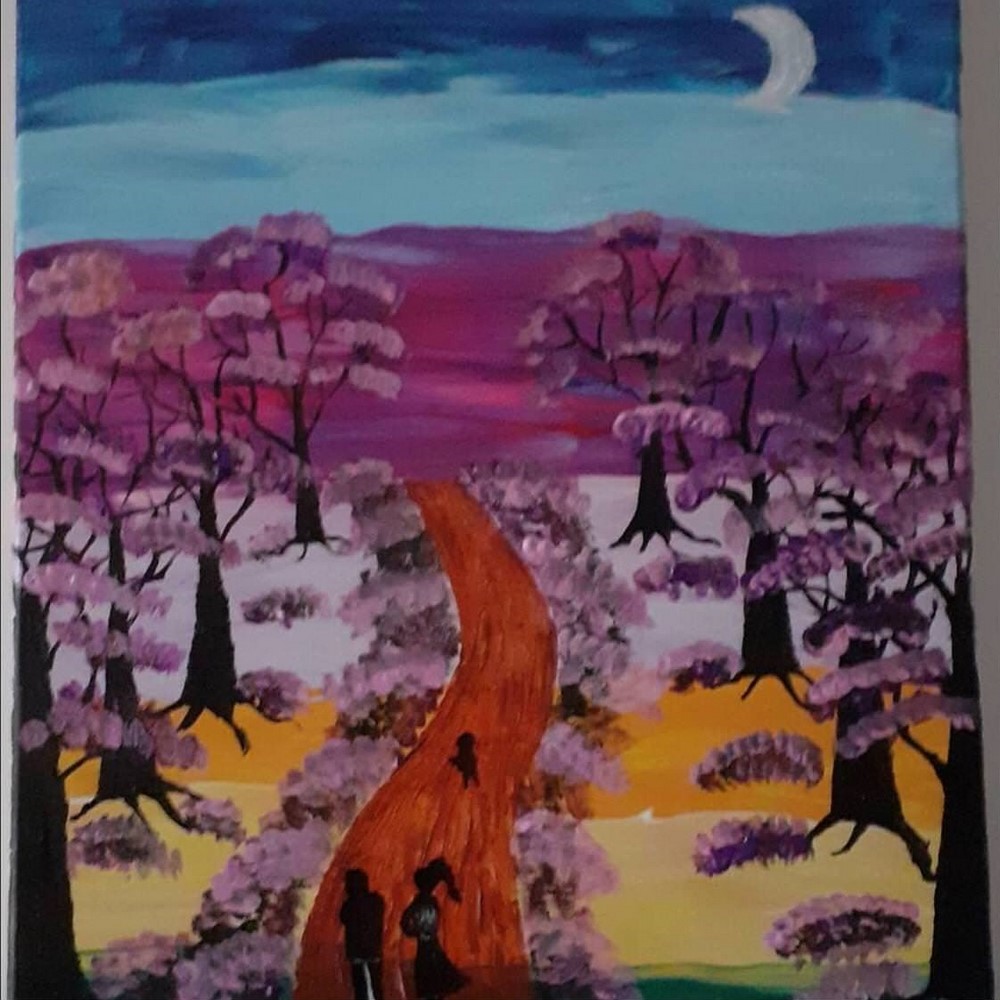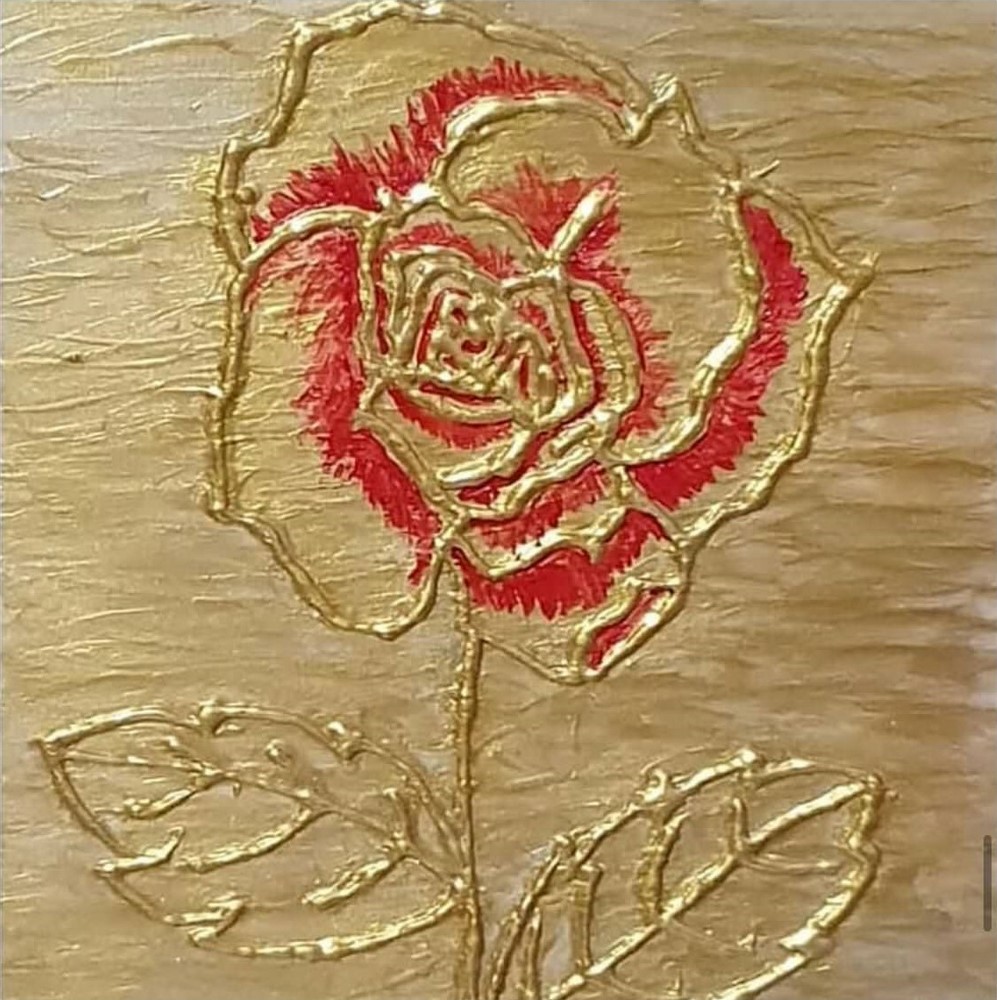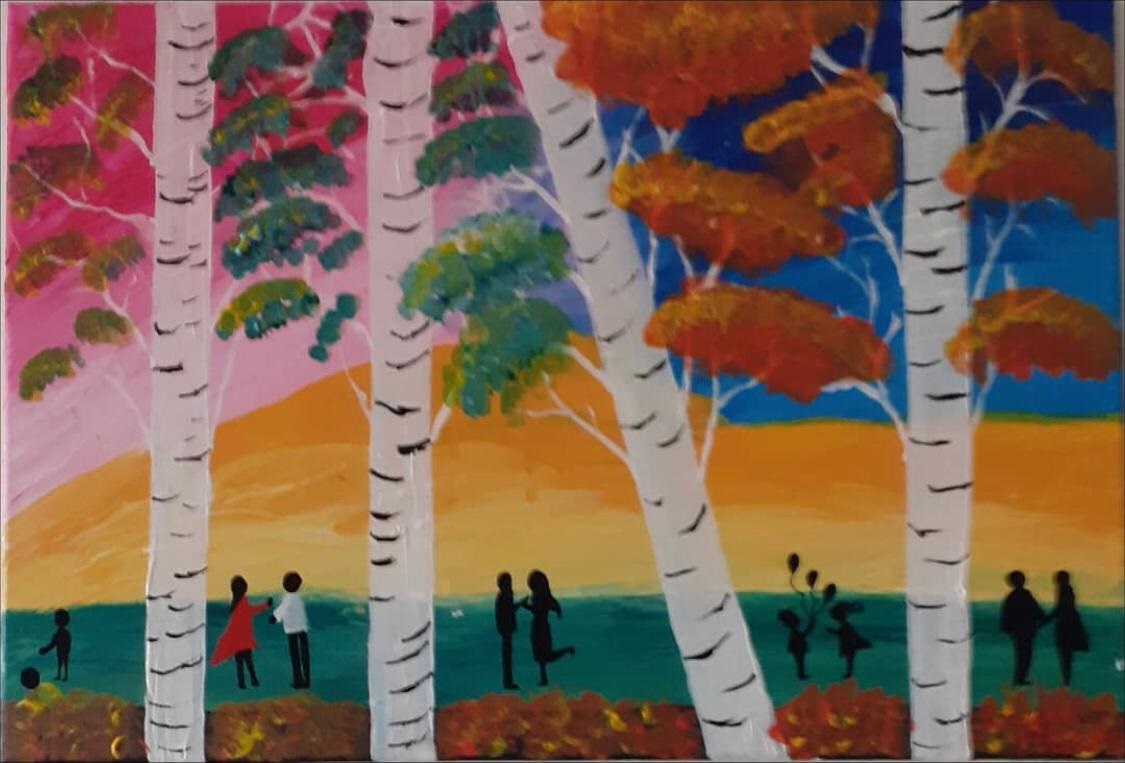
Claudia Ciappino is an Italian artist involved with environmental preservation issues and makes an appeal in her works using recycled materials. Providing a new life and purpose to these materials, demonstrates respect for planet Earth, our only home, and makes us reflect to also respect.
Interview
Claudia, tell us a little about yourself ...
I was born in Formia (LT) and live in a small village in the province of Caserta. I came from a family of humble beginnings. Since I was a child I always loved drawing landscapes. I am very fascinated by the colors and I remember that when I looked at the pictures hanging in the house, I fantasized about knowing who painted them. So I started studying the artists of the past and fantasized that one day I could become like them. Over time I have dedicated myself to pencil drawing, putting love and passion into it. Hence the choice of an artistic formation. I actually graduated from the State Art Institute of Cascano. In the past I worked as a shop assistant in a supermarket Now I am a housewife and a full-time mother.

When he woke up his desire to be a visual artist?
My desire to use plastic in my works arose from an environmental problem in my province:
»Correct waste disposal«
For some of my works I collect and insert the waste. I do it to make people aware of the correct disposal of waste such as plastic, paper, glass and aluminum. With plastic I produce embossed floral compositions on canvas.
What kind of art do you like best?
There are two types of art that I prefer and do: abstract and figurative art. Abstract art because I give vent to all my imagination creating images that do not belong to visual reality trying to express in compositions free of lines, forms, colors, without imitating the concrete reality, I try to communicate contents and meanings with the use of color to arouse strong inner emotions. Unlike abstract art, figurative art is concerned with the representation of recognizable images from the world around us, trying to convey deep emotions to anyone who observes the work.
How he developed his style (techniques)?
The technique I use is mixed. I use acrylics, oil, glitter and recycled materials. I tend to use acrylic due to the wide variety of colors that keep the shine and also because it has a short drying time. Then I enrich the paintings with application of recycled material and glitter to make the works shine. Being a self-taught experiment I also use the decoupage technique in my paintings.
Cite if you had artistic influences in your works and which artists?
Yes, in my artistic career I had some artists that influenced my art. Picasso for abstracts but also for sculptures made from recycled material. In fact, he created many works like the Taurus cavea, the Goat and the young Baboon. Then there is Vincent Van Gogh for his fascinating landscapes that move me a lot. And lastly, my dear artist, Fabiana Macaluso, with her art that comes from her work., there are many portraits of African women, with these works from the last period directed me to portray female faces. But I'm still looking for new ideas and painting styles to grow artistically.
Do you have a family member or acquaintance who is an artist?
Not, I don't have family members who are plastic artists.
Living from art is possible?
Yes, but it is not simple. The world of art today is not for everyone because resources and efforts are often spent. Or there are the privileged ones where artistic talent is in the background. Everything in this period is aggravated by the serious problem that afflicts the whole world, the Covid, that has brought the entire national and international economy to its knees.
Ever thought about not acting with more art? can comment why?
as a girl, when I was about to graduate, I decided to close with art. One of the many reasons is that I was thinking about the life lived by Van Gogh, a great artist who was not recognized in life, but only after his death. All of this discouraged me, making me believe at first that I would never be able to make my art and everything inside me known. Situation that in the last period changed mainly due to the artistic knowledge I acquired, another reason was to think that it was impossible to enter the art world because I had little confidence in myself.
What skills are needed today for the artist?
It takes a lot of imagination, determination and dedication in working with plastic arts to make a work reborn from a simple plastic object that should definitely be thrown away. Have manual skills to work it, then decorate it giving it a new life, turning over the shape that it had initially, giving you a new life to give you the right value.
What do you feel when you create or appreciate a work of art?
When I create, I upload everything I feel to the screen: anger, resentment, sadness, affliction, happiness, happiness. I paint colors and brushes. I can't even think of the problems that surround me, it is as if I was moving away from everyone, passing all fears, I feel great satisfaction as the work takes shape and when I finally finish it I feel an immense joy that leads me to publish it to everyone.
Your inspirations to create a work of art?
Sometimes I get inspired by the people I live with, day-to-day and environmental problems.
Which art has impressed you the most so far?
The art that has impressed me the most so far is hyperrealism. It is an artistic movement that developed in the United States at the end of the year 60, later arriving also in Europe. It is an artistic movement that is inspired by objects of everyday life and consumerism. The stylistic figure of absolute importance that characterizes this artistic current is that of creating works that are as real as possible. O hyperrealism, in fact, seen to imitate reality and the artists who are inspired by it represent how it appears to their eyes, no filters and no lies.
You must always be creating or creating only at certain times?
Not always. I do it when I feel like it and when the inspiration for new work grows inside me. When I'm not in the mood, I can't do anything. There are periods that I don’t paint and periods when ideas come to me one after the other, it is at that moment that I work incessantly.
The product of your work is unique or has a close or distant relationship to your previous work?
My works have always had a relationship between them. I specify that this is not a repetition of the works, but of a common thread that I describe are always landscapes, female figures and flowers. I do not enter, are works carried out with different techniques.
[divider]
[divider]
What are the challenges of art / artist in the current scenario?
The challenge is to be able to enter the museums, be valued and historized, another is to put the works themselves on the market also because we live in a certain historical period due to the serious economic crisis and the succession of several gaps.
Social networks have helped you to spread your work?
Yes, in this period I always publicize my works through social networks but with the help of galleries and museums. Today turns out to be the only channel to make yourself known.
How plastic arts can contribute to education and culture?
Plastic arts can contribute as much as an awareness campaign for the correct disposal of waste. And with the advent of the industrial revolution that starts the industrialization process, the emergence of large factories with the consequent industrial chemical discharges, were added to other waste, atmospheric pollution harms the environment and human health and it is a fact that we do not forget our oceans that are increasingly becoming the Earth's landfill. From plastic bags to pesticides, most man-made waste ends up in one form or another at sea, also ships and oil platforms. Every minute a garbage truck stops at sea, plastic bags, shoes, balloons, packaging material, in particular plastic, which is a non-biodegradable material, runs the risk of being ingested by whales, sea turtles, seagulls and other fish, ending up even at our tables.
Sign up to receive Event News
and the Universe of Arts first!
How you analyze the qualities of a work of art?
The quality of a artwork it is not analyzed simply by observing and appreciating a painting, it is necessary to know some information that indicates the date of execution and the context in which it was carried out. Observe it carefully and methodically, describe it verbally, transforming visual language into spoken and written language. This operation allows us to create mental connections between the work of art and our personal history. Thus, our eye sees particular aspects that a hasty and distracted look leads us to neglect.
What are the criteria for stipulating the value of a work of art?
To establish the value of a work of art it is necessary to focus on the main characteristics. To correctly evaluate a work, you must first assess the symmetry, the harmony and even the elements considered provocative. So, there are subjective criteria linked to signature, for the allocation of conservation, provenance, bibliography, authenticity, aesthetic and cultural value, subject and dimensions. In determining the market value of a work of art, the artist's reputation and past sales are taken into account.
Talk about your projects today ...
A project I have in mind is an art collective with the group I belong to, the Workshop Virtual Art Social Group non-profit from Fabiana Macaluso. An exhibition on the topic of waste, about the correct way to eliminate them and about the risk of the environment that surrounds us, so a real awareness campaign.
What's your advice for those just starting out?
My advice for those who start now because we are in a bad time, it is preferable to make yourself known through social networks. Start contacting the galleries to start an artistic career to exhibit your works. Then gradually exhibitions will also arrive at museums.
If you want to leave a message ...
The message I want to leave is to respect our planet Earth. So I invite everyone to do the selective collection and correct recycling of plastic, of the glass, of paper and aluminum. We live on a planet that we have a duty to respect, that represents our home and we have no other, so let's laugh about it and respect ourselves.
About your exhibitions, have any comments regarding, feelings…
I am particularly happy just because my works are seen by many people, mainly not exterior, thanks to the countless virtual exhibitions in which I had the honor to participate.
Could you comment on some artistic curiosity?
An artistic curiosity in the starry night of Vincent Van Gogh and Saint-Remy-de-Provence in southern France. Van Gogh painted the work while he was hospitalized as a patient at the Saint Paul de Mausole psychiatric hospital in Saint Remy. My thoughts on this Van Gogh story is that I am very sorry because he led a life full of sacrifices and health problems.
How would you define your art in one line?
Ingenious recycling.
Social Media:
Facebook: @Claudia Ciappino
Instagram: @claudiaciappino
* Thanks to Buana Lima, advisor to the plastic artist, for all the pertinent information the interview.
…





